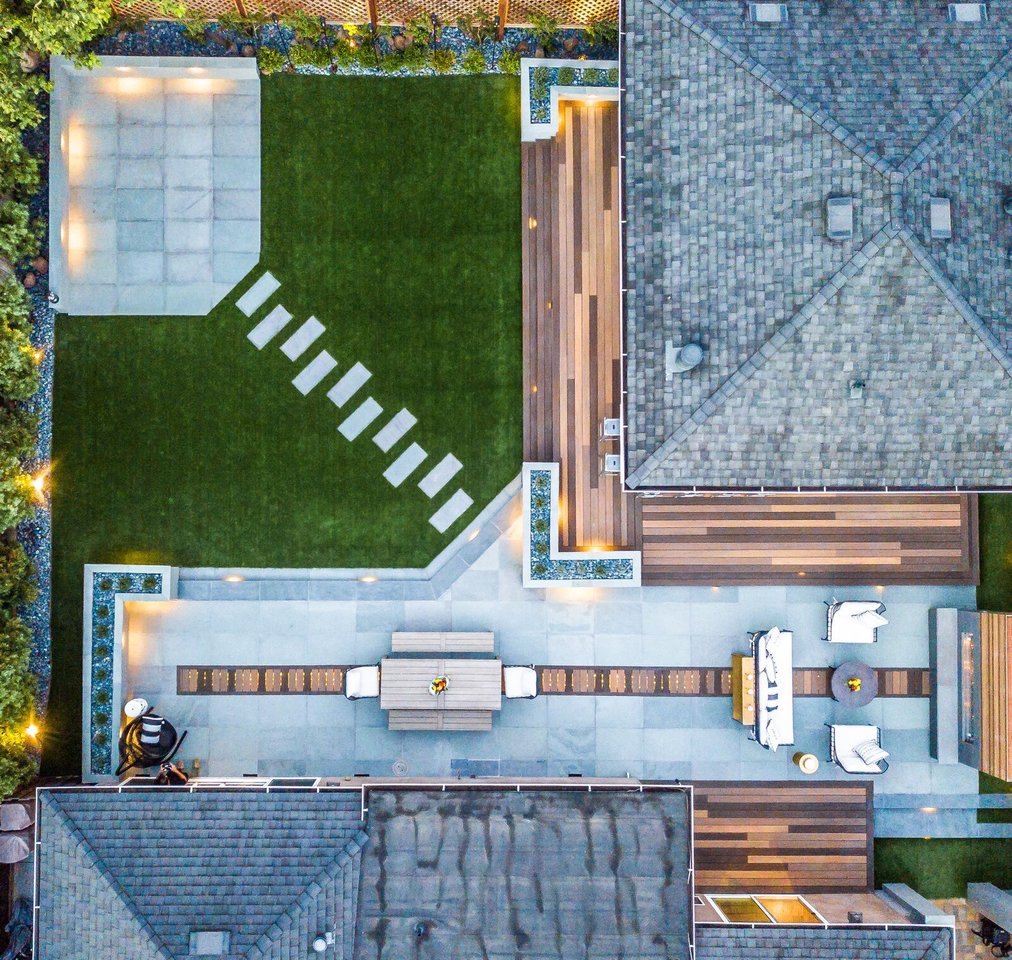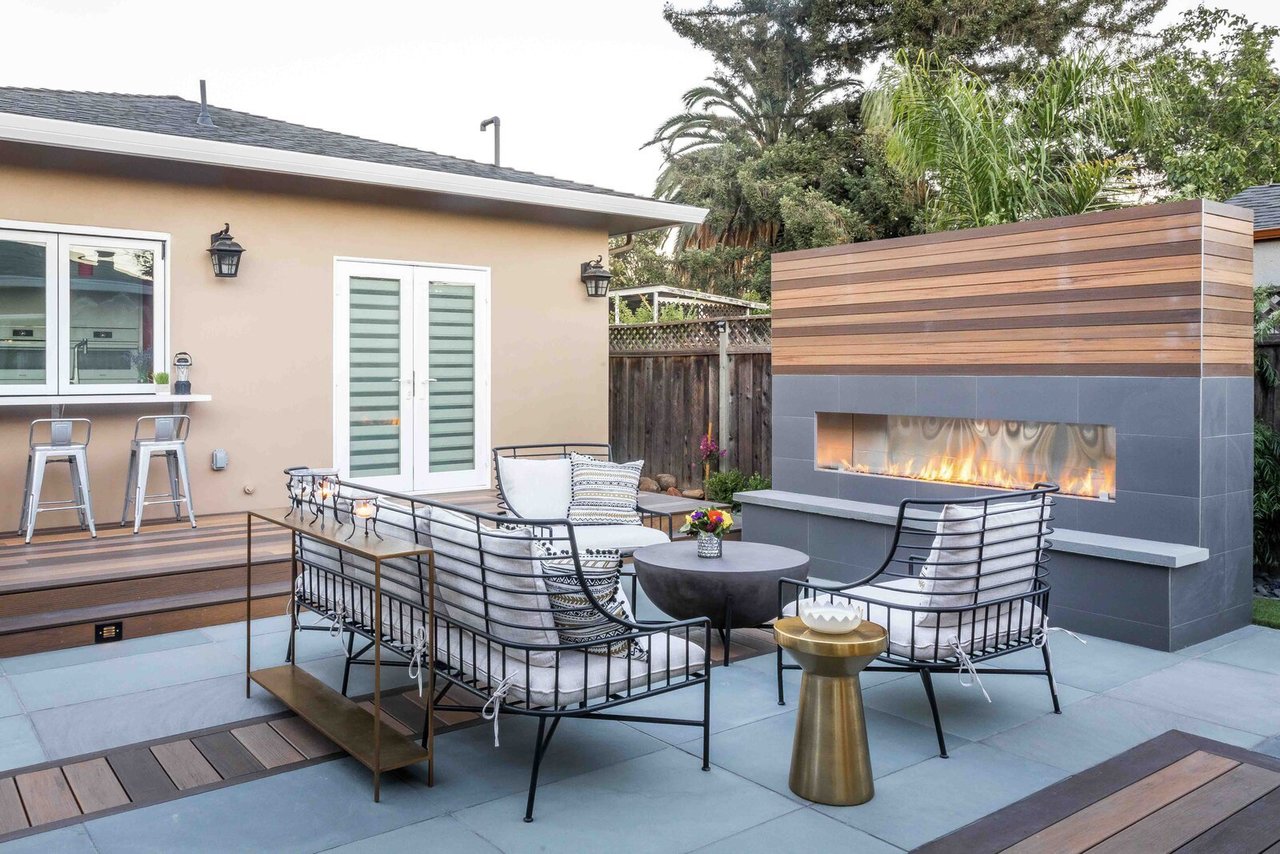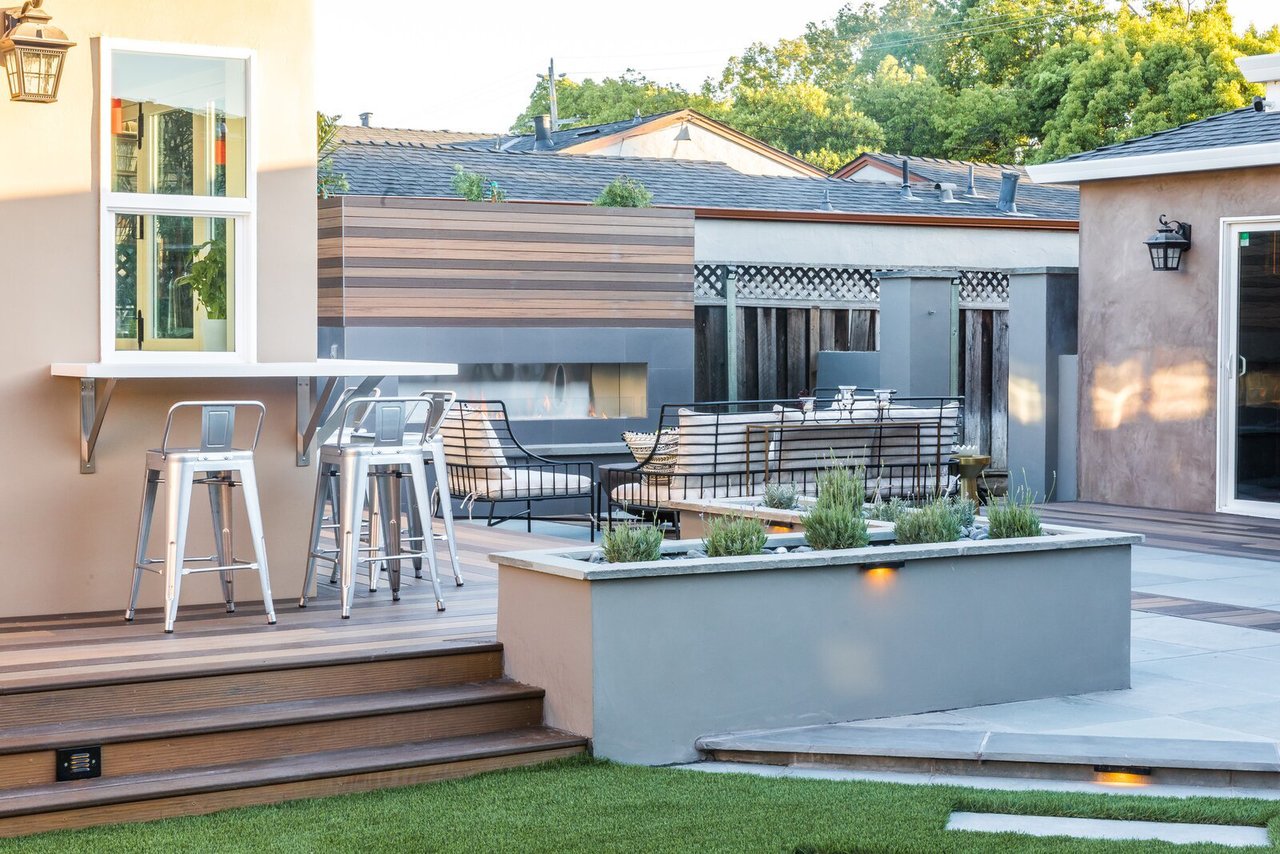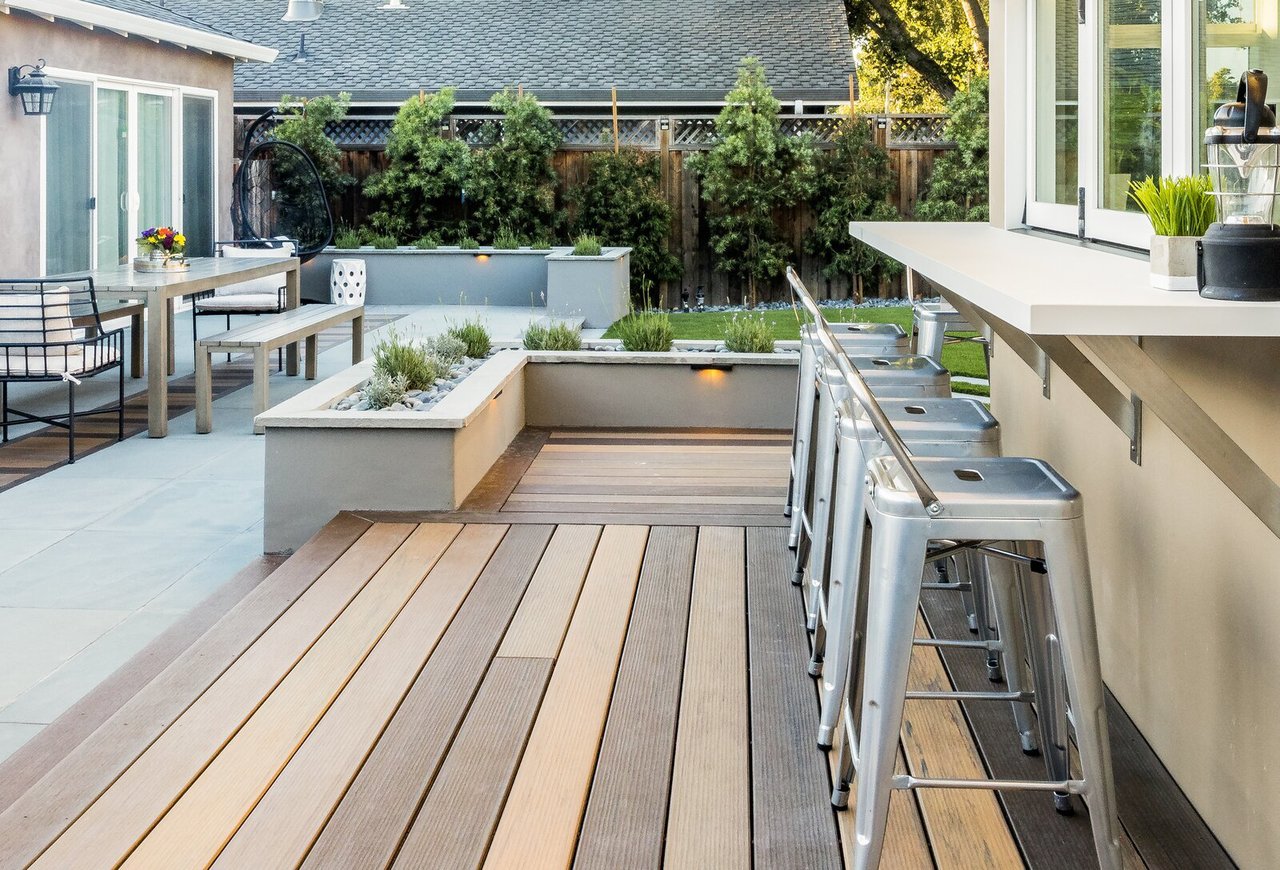While wooden decks are beautiful, concerns over upkeep and long-term decay may have you considering composite decking products instead. But what if you could have the look of real wood while helping to divert plastics and other wastes away from landfills? An ingenious process from composite decking manufacturer TimberTech is doing just that: engineering products that convincingly resemble natural wood while at the same time recycling several hundred million pounds of sawdust and plastics each year.
A reimagined backyard in San Jose, California, makes the most of TimberTech’s composite decking products to unite a bluestone patio and detached in-law suite with the main house.
"Maintenance and durability are two key considerations when deciding between composite and wood decking," says Patrick Barnds, SVP of Product Management at TimberTech. "However, another consideration is the sustainability aspect of composite products."
While the term "composite decking" is often used broadly in communication, it actually describes two slightly different methods of manufacturing deck boards: either by combining plastic resin and natural wood waste (such as sawdust), or by using a fully synthetic polymer solution. In either case, the resulting mixture is combined under heat and pressure to form the core of the board, which is then enveloped in a protective shell that also provides the color and finish. TimberTech, which makes both types of products, takes the process one step further by actively sourcing recycled materials and reintroducing scraps from its own manufacturing process.
"To achieve a more consistent and dependable supply of inputs, we invested in our own recycling capabilities," Barnds adds. "We built a state-of-the-art plastics recycling facility that supplies materials for our capped wood-plastic products, and we also bought a company that specializes in harder-to-recycle plastics like PVC for our capped polymer products. Together, these programs allow us to increase the recycled content of our products as much as possible. In fact, we’re on track to use almost 300 million pounds of scrap and waste materials this year." 
At one end of the patio, the custom fireplace is also clad in TimberTech’s composite boards.
On another side, a raised planter wraps around a corner between the patio and deck.
In addition to recycling, TimberTech's ongoing investment in research and development has led to new manufacturing processes that avoid the telltale signs of synthetic products-for example, overly simplistic wood-grain patterns or unrealistic, contrasting color schemes. Specifically, the company’s multifaceted finishing technologies focus on recreating the natural nuances found in dozens of wood varieties.
"To achieve a visual that comes as close as possible to real wood, we use a multi-stage color blending system that creates subtle highlights and low-lights similar to the board-to-board color variation of natural wood," explains Barnds. "Then, we incorporate an embossing step to add various grain patterns, which range from a traditional wood grain to the look of quarter-sawn hardwoods, wire-brushed finishes, and even reclaimed lumber, among others. The visual combinations are not easy to recreate, which is why we place such an emphasis on investing in the technology that goes into our product lines."
The technology behind TimberTech’s products recreates the look of real wood, with various steps to produce the variation found in natural products as well.
In addition to understanding how different composite decking products are designed and made, other questions can help you consider the best option for your climate, budget, and aesthetic goals. A landscape designer can also provide advice and clever design ideas-from mixing widths and colors to creating custom herringbone, chevron, or other patterns.
Matt Daly, whose firm, Water & Earth Landscape Design, worked on the San Jose project, offers this advice to customers: "Color and size selection comes down to aesthetic, the intent of the design, and paying respect to the home’s architecture or natural surroundings." About the San Jose project specifically, he adds, "The green turf grass, combined with the bluestone, didn’t allow for much variation, so we wanted to make the decking a focal point."
The days of choosing between two product colors are long gone as well. "When I was first introduced to composite decking, the choices were a not particularly attractive mottled gray or a light, tan-brown—both of which faded quickly and came with a minimal performance warranty," recalls Barnds.
"Today, no matter if you prefer the look of a softwood or hardwood, a domestic or exotic species, and a like-new or time-worn finish, you can likely match the visual with a composite decking product. Our boards have also demonstrated a long-term resistance to fading, which we back with a lifetime warranty on the product structure in addition to a 50-year fade and stain warranty for our polymer products." 
TimberTech’s decking products come in dozens of pre-applied colors-from darker shades like Mahogany and English Walnut to lighter tones such as Ashwood and Driftwood.
"Understandably, one of the biggest factors clients worry about is cost," says Daly. "While composite decking can be a little more expensive up front as compared to low-end lumber, I also encourage clients to consider the long-term cost of maintaining or rebuilding a wood deck."
Barnds points out that TimberTech's decking products require only an occasional cleaning with mild soap and water. "Even with very little maintenance, high-quality composite decking will last 25 to 50 years," he says. "In comparison, a well-built and consistently maintained wooden deck made of pressure-treated pine, cedar, or redwood has a reasonable service life of around 15 years, depending on the local climate." 
Both the raised patio and deck lead down to the lawn, which also features stepping stones that connect with a smaller bluestone patio in the corner of the lot.
In 2019, TimberTech introduced the industry’s first multi-width decking product, adding narrower and wider options to their standard five-and-a-half-inch boards. About the new product line Barnds adds, "When you have the ability to mix widths and colors, there are many possibilities for creating custom patterns or insets. It’s really fun to see the creative ways deck builders and homeowners take advantage of the design potential."

Tropical Boho Homes With Beautiful Vignettes & Vistas
Two tropical boho home designs, featuring swimming pools, cozy lighting schemes, interior archways, natural accents, and beautiful decor vignettes.


![A Tranquil Jungle House That Incorporates Japanese Ethos [Video]](https://asean2.ainewslabs.com/images/22/08/b-2ennetkmmnn_t.jpg)









